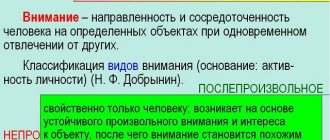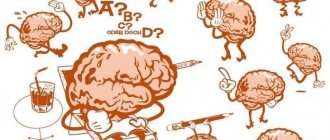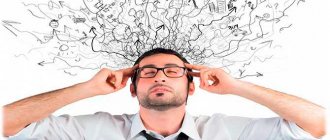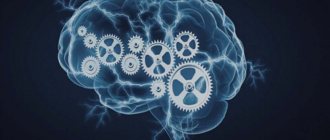Attention deficit hyperactivity disorder is a very unpleasant disease that can significantly affect the daily life and performance of every person. People of all ages are at risk of encountering it, but it causes the most problems for adults. Many patients do not receive any treatment, which is why they are forced to suffer from constantly occurring symptoms. This is due to the fact that treating ADHD in adults is a complex process that requires a lot of attention and effort. To achieve any result, returning to your usual state, you need to know not only the methods of dealing with the problem, but also what it is.
What is attention deficit disorder in children?
Attention deficit disorder or ADD is a neurological and behavioral disorder that affects 5-20% of people around the world: both children and adults. Statistics in this case are biased, since in some countries scientists simply do not consider ADD worthy of treatment or academic study.
It is believed that 30% of children with this diagnosis outgrow or adapt to it in adulthood. Attention deficit disorder is more common among boys and is most often accompanied by hyperactivity. But it is more difficult to diagnose it in girls, since they are usually calmer and more balanced.
Contrary to popular belief, children with ADD do not have low intelligence, however, it is much more difficult for them to realize their potential without the use of proper correction methods.
Classification, reasons
Many scientists question the existence of ADHD. The reason for this is the lack of an accurate ability to identify the disease in a patient through instrumental diagnostics, as well as the large difference in the number of people affected by the syndrome in different countries. Nevertheless, the problem is officially recognized, and attention deficit is classified as ICD code F90.0.
ADHD most often appears in childhood. The child does not seem as smart as his peers, he cannot complete all assigned tasks, and he behaves strangely. Adults encounter this problem very unexpectedly. As a rule, the syndrome still begins in childhood, but does not appear until many years later, when the person’s brain is under serious pressure from work, household responsibilities or problems. ADHD is associated with insufficient development of the psyche, which is not able to withstand the usual load for many people and fails. For the same reason, the disease may not show itself immediately.
Classification
A separate classification has been developed for ADHD, which reflects the predominance of one or another aspect of the disease. This helps to make a more accurate diagnosis and prescribe the most effective treatment. The species is determined at the diagnostic stage. There are 3 of them in total:
- ADHD-DD - symptoms are limited to attention deficit or are expressed only by it, the patient is absent-minded and forgetful, may look stupid even with a high IQ, performance is quite low, procrastination often appears;
- ADHD-H - symptoms are concentrated in the manifestation of hyperactivity, the patient has difficulty sitting still, he may rock in a chair or shake his legs, often leaves the workplace under various pretexts for the sake of physical activity, may become irritated because it’s hard for him to rest;
- ADHD-C – symptoms are mixed, the patient has difficulty focusing on one task, he is often distracted, forgets important information, and he always has a desire to do something physically.
Sometimes doctors separately identify an unspecified type of ADHD. This diagnosis is made if it is not possible to accurately determine all the features of the disease. It is often used for preliminary conclusions.
Causes
The exact causes of attention deficit disorder in adults still remain unknown. However, scientists were able to identify factors that could trigger the development of the disease. They can affect the body even during the period of fetal formation, which will cause the manifestation of ADHD in the future.
The main reasons are as follows:
- Genetic predisposition;
- Negative effects during pregnancy (infections, medications, alcohol, smoking);
- Risk factors for miscarriage during pregnancy;
- Chronic diseases in the mother at the time of pregnancy;
- Complications during childbirth, caesarean section;
- Incompatibility of mother and child by Rh factor;
- Diseases in a newborn;
- Taking strong medications in the first years of life;
- Unfavorable environmental conditions.
If an adult has the disease, then regular stress associated with serious stress on the psyche can provoke its awakening. Therefore, it is very important to dose heavy work at the slightest risk of having such a disease.
ADHD was first described in 1902 by D. Still based on a group of children with severe symptoms of inattention, hyperactivity and impulsivity.
Is ADD a problem?
Attention deficit disorder began to be studied at the end of the 19th century, however, most people around the world to this day associate its symptoms with gaps in education or banal laziness. Therefore, most often children with ADD are influenced exclusively by pedagogical methods, without realizing that what is happening to the child is actually connected with dysfunction of the nervous system.
Indeed, at first glance, attention deficit disorder does not seem to be a serious problem, however, already in older preschool age, the child begins to have problems with social adaptation in kindergarten. He is restless and absent-minded, cannot concentrate on one type of activity for more than 3-5 minutes, while his peers are able to do all 10-15.
At school, the problem gets worse - it is difficult for the child to sit through the lesson, he has difficulty perceiving new information and cannot keep up with the pace of learning of other children. If he fails to become a positive statistic and outgrows his ADD symptoms, he may be susceptible to:
- difficulties with assimilation of information;
- decreased motivation in studies, complete ignorance of those subjects that are most difficult for him;
- low self-esteem, lack of self-confidence, as it will actually lag behind classmates in studies;
- increased anxiety, which will replace excessive physical activity;
- the occurrence of tics - repeated muscle twitching;
- depression, which can manifest itself in sleep disturbances, melancholy and indifference to traditional children's entertainment.
In adult life, attention deficit disorder manifests itself somewhat more restrained, because a person has largely adapted to the characteristics of his psyche. People with ADD often experience the following symptoms:
- instability of attention - it is difficult for them to carry out everyday activities (pay bills on time, take medications, do cleaning, etc.), at the same time, they concentrate well on new information that interests them (technology, video games, pressing social problems);
- lack of self-control - they tend to speak first and then think, they are impulsive, which often becomes the cause of conflicts with other people;
- disorganization, inability to long-term planning;
- absent-mindedness, inability to abstract from irritating factors while performing specific work.
As you can see, attention deficit disorder is much more serious than classic age-related crises. First of all, it requires diagnosis by a specialist and determination of appropriate correction methods: pedagogical and medicinal.
Symptoms
The syndrome manifests itself very noticeably in adults. Sometimes from the outside it may seem that a person is simply tired, did not get enough sleep, or is faced with life’s difficulties. But those close to him know that he is always like this, and his unusual behavior and condition are associated with the disease. ADHD symptoms can be divided into several components, each of which includes specific features.
Concentration
The first symptom of the syndrome is impaired concentration, which manifests itself in all daily activities, work and communication. Along with it, there is often a complete loss of interest in many phenomena that previously attracted the patient. Violations include the following manifestations:
- Abrupt disconnection of the brain from talking or doing work;
- Frequent distraction from the activities being performed;
- Inability to focus normally on one phenomenon or action;
- Lack of attention to minor details;
- Rare completion of tasks by 100%;
- Inattentiveness in conversation, inability to retell the dialogue.
In some cases, this symptom becomes reversed. Then the patient will begin to experience hyperconcentration. He will immerse himself in the work at hand so deeply that he will lose track of time and stop paying attention to everything that is happening around him.
Organization
Signs of attention deficit in adults bring many problems, in which disorganization plays an important role. It occurs in almost all patients, having a negative impact on work efficiency and the success of completing assigned tasks. The symptom may appear like this:
- Lack of time for household chores;
- Regular procrastination “for later”;
- Difficulty starting or completing a business;
- Inability to calculate time;
- Forgetfulness, loss of even important information from your head;
- Frequent and forced search for small things (keys, remote control, etc.).
Such people always forget about something, cannot find things that they themselves held in their hands 5 minutes ago, are late for important meetings and suffer from a constant lack of time.
Emotions
ADHD is often accompanied by unpleasant emotions. Adults experience feelings of anger or frustration that are associated with constant worries. They may manifest themselves as the following symptoms:
- Inability to control emotions;
- Frequent overwork;
- Irritability, mood swings, short temper;
- Low self-esteem, resentment;
- Expectation of bad results;
- Constant lack of motivation to perform various tasks.
Many patients become closed people because... communication often causes them emotional difficulties, and work leads to disappointment. They are constantly sad, their thinking is depressive, there are no expectations for positive changes.
Hyperactivity
Increased activity and energy become a real problem, because... the person is unable to concentrate on one thing, and is unable to remain calm or sit still. The patient will encounter the following signs of the syndrome:
- Constant excitement, desire to do something;
- Motor restlessness, lack of perseverance;
- Craving for risky actions and vivid impressions;
- Frequent changes of thoughts, desire to multitask;
- Rapid onset of boredom during monotonous work;
- Strong talkativeness, annoyingness.
A person with ADHD is virtually unable to sit still. He tries to constantly move, takes on many things at once, talks often, and thoughts in his head very quickly replace one another.
Impulsiveness
Impulsivity refers to the inability to control one's words and actions. It is part of the symptoms of ADHD and can cause a lot of inconvenience, as well as spoil relationships with other people. Often patients do not even notice the incorrectness of their behavior. The symptoms are as follows:
- Inability to control yourself;
- Sharp expressions of thoughts;
- Interrupting the interlocutor;
- Spontaneity of dangerous actions.
Some patients behave antisocially, which is why they are not accepted by other people. It is possible to develop drug addiction or alcoholism, which is associated with a craving for addiction and risk.
Statistics show that women are more likely to have problems with concentration and organization, while men are more likely to have problems with hyperactivity and impulsivity.
Causes of attention deficit disorder
Despite a century-long history of observations, attention deficit disorder is still not well understood by scientists. Science does not yet know the exact reasons for its development in children. However, scientists put forward a number of theories that one way or another explain the occurrence of this disease. Here are the main causes of ADD:
- heredity - observational statistics have proven that the likelihood of the syndrome in children whose parents also had a history of it is several times higher;
- complex course of infectious diseases and other pathologies during pregnancy;
- abuse of alcohol, nicotine and caffeine during pregnancy can lead to irreversible changes in the fetal brain;
- premature birth;
- Rh conflict between the blood of mother and child;
- birth injuries, as well as head injuries and severe infectious diseases in a child in early infancy.
Some experts add other factors to this list:
- disorders of the thyroid gland;
- excessive consumption of sugar and foods with harmful food additives;
- lead poisoning;
- stressful living conditions (frequent moves, parental divorce);
- Child's passion for gadgets and TV.
How to be treated
Medications: Psychostimulants containing amphetamine (Aderall or Dexedrine) or methylphenidate (Ritalin) are still used to treat ADHD. Drugs from other groups are also prescribed, for example, norepinephrine reuptake inhibitors (atomoxetine), antihypertensives (clonidine and guanfacine) and tricyclic antidepressants. The choice depends on the specific manifestations of ADHD, additional risks (propensity for drug addiction or concomitant mental disorders) and the desire to avoid certain side effects (an approximate list of “side effects” from different drugs can be found here)
Since in Russia psychostimulants are firmly entrenched in the list of dangerous narcotic substances that are not available even by prescription, domestic psychiatrists use atomoxetine, guanfacine or tricyclics.
Psychotherapy. Cognitive behavioral therapy is believed to help with ADHD, which, unlike many other schools of psychotherapy, emphasizes working with the conscious mind rather than the subconscious. For a long time, this method has been successfully used in the fight against depression and anxiety disorders - and now special programs have appeared for the treatment of attention deficit disorder. The essence of such therapy is to develop awareness and not allow irrational patterns of behavior to take over a person’s life. Classes help control impulses and emotions, deal with stress, plan and systematize your actions and bring things to completion.
Nutrition and dietary supplements. You can try to adjust your diet in accordance with the advice of foreign medicine. The most common recommendations are to take fish oil and avoid sudden spikes in blood glucose levels (that is, say no to simple carbohydrates). There is also evidence showing a relationship between low levels of iron, iodine, magnesium and zinc and increased symptoms. Some studies suggest that small amounts of caffeine may help you concentrate, but most experts still advise against drinking too much coffee. In any case, adjusting your diet is more of a “maintenance” measure than a full-fledged way to combat the disorder.
Schedule. People with ADHD, more than anyone else, need planning and a clear routine. An external “backbone” helps to compensate for internal problems with systematization and time management: timers, organizers and to-do lists. Any large projects should be divided into small tasks and rest periods and possible deviations from the schedule should be included in the plan in advance.
How does attention deficit disorder manifest?
Classic symptoms of attention deficit disorder are most pronounced between 5 and 12 years of age. These are attention disorders, hyperactivity and impulsivity. At an earlier age it is extremely difficult to assess them. However, there are other signs of ADD that allow a child to be classified as at risk from the cradle:
- the baby began to hold his head up, roll over on his side or stomach earlier than expected;
- does not know how to fall asleep on his own, throws tantrums before bed;
- sleep is accompanied by frequent awakenings, and its duration and frequency are below the norm for age;
- short-term and shallow interest in toys;
- frequent digestive disorders;
- regular manifestations of allergies, skin rashes.
Children with such symptoms cause parents a lot of trouble, but the long-awaited relief will not come soon. Once they reach 3 years of age, they will have to deal with the key manifestations of attention deficit disorder.
Attention impairment is the inability to concentrate on a task for a long time. Concentration is only enough for a short period of time, and then the same amount of time is required to restore the resource. Even at the moment of being immersed in a task, the child is not able to separate the main from the secondary, ignores details, and cannot plan the sequence of actions. He is distracted by extraneous sounds and the presence of other children.
Hyperactivity is an excessive need for physical activity. Hyperactive children also tend to unconsciously make inappropriate movements: spinning their hands, feet, kicking their legs against each other or on a table, chair, etc.
Impulsivity – characterized by a lack of patience, frequent mood swings, and an inability to follow complex instructions. A child with ADD is only interested in his desires, he acts thoughtlessly, ignoring social norms of behavior. On the way to the goal, he stops at nothing: he can disrupt a lesson and even hit another child.
In addition to the main symptoms, there are other features of ADD:
- problems communicating with peers - the child is overly intrusive, emotional and even aggressive;
- difficulties in learning accompany even children with a high level of intelligence;
- weak emotional intelligence - the inability to adequately assess the feelings of people around you and predict their reaction to your actions;
- negative self-esteem, comparison with peers not in one’s favor.
Despite the variety of symptoms of ADD, they do not always appear as a whole. The child may have certain characteristics that will become the basis for making a diagnosis.
Diagnostics
The diagnosis of ADHD is not made solely on the basis of existing complaints. To accurately confirm the diagnosis, it is necessary to conduct some examinations. First of all, you need to visit a neurologist, psychiatrist and psychologist.
During the consultation, the doctor collects anamnesis, conducts various tests, conversations, diagnostic surveys, etc.
In order to identify the cause of the development of ADHD, consultation with other specialists may also be required, as well as instrumental and laboratory examination methods, such as: EEG, MRI of the brain, general and biochemical blood tests, etc.
Hyperactivity in children: features of ADD with hyperactivity
A child with attention deficit disorder who appears calm but has difficulty concentrating rarely raises concerns among parents. They say about him “he is in the clouds”, “there are not enough stars in the sky” and they calm down on this. But those children whose ADD is accompanied by excessive motor activity often cause anxiety and the desire of parents to show them to a specialist.
Attention deficit hyperactivity disorder (ADHD) is the most common type of ADD. It is impossible to seat such children at a desk; they need to jump and run until they sweat, but the clinical picture is not limited to this.
Children with ADHD are characterized by:
- fast and loud speech - the child does not listen to the end of the question, immediately giving an answer to it;
- illiterate speech - he is in such a hurry to speak that he loses the endings of words and misses entire words in a sentence;
- hasty speech reaction - first speaks, and then thinks about what was said;
- aimlessness of physical activity - the need for movement is very high, but is devoid of any purpose, that is, the child does not put the ball into a basket or into a conditional goal, but simply runs in circles;
- running instead of walking - even when walking around the store, the child skips;
- expressive facial expressions, frequent changes of emotions on the face for no apparent reason (anger-surprise-joy-fear, etc.);
- lack of self-preservation instinct - without thinking, runs out onto the road, ice, climbs to dangerous heights.
Hyperactivity frightens many parents, because the child cannot calm down for a minute. However, science has been able to prove the fact that during excessive physical activity in children with ADHD, the brain centers responsible for self-control and thinking are stimulated. Essentially, the child’s brain gives a command to move more in order to even out the development of “lagging” areas. Therefore, parents are strongly discouraged from prohibiting their children from “letting off steam.”
When raising a child with ADHD, it is important to remember that his psyche is very vulnerable, and attention deficit and hyperactivity are ways to protect himself from stress on the nervous system.
Treatment of patients with attention deficit hyperactivity disorder (ADHD) is one of the pressing problems of child neurology and psychiatry. It occurs in 5-9% of children in the general population [1, 2, 7, 23]. Children and adolescents with ADHD are restless, distractible, hyperactive, impulsive, have poor academic performance, and are tired. Despite the fact that in 30-50% of cases, ADHD symptoms that develop in childhood, to one degree or another, continue into adulthood [6]. The clinical manifestations of this disorder in adults have received much less attention. ADHD occurs in 3-6% of the adult population [15, 17, 20].
ADHD is currently considered a manifestation of a neurodevelopmental disorder. Therefore, it is assumed that the primary development of ADHD in adulthood is impossible.
Specific criteria have been developed to assess ADHD in adults [6]. According to these data, adult patient behavior in childhood (retrospectively) should meet DSM-IV criteria for childhood ADHD, and in adults it should meet the following features 1 and 2, as well as at least two of features 3-7: 1 Constant physical activity. 2. Attention disorders. 3. Emotional lability. 4. Inability to complete a task. 5. Hot temper. 6. Stress intolerance. 7. Impulsiveness.
The listed signs determine the behavioral characteristics of adult patients with ADHD in social and personal life. Although these patients do not exhibit cognitive impairment, their academic achievement and education are also affected. Patients with ADHD are less likely to receive higher education and hold lower professional positions. Such people are characterized by a decreased ability to manage time, poor work organization, very frequent job changes and layoffs. However, the unemployment rate among them does not differ significantly from the level of the control group. They are much more likely to cause car accidents [10] and suffer from accidents. When performing psychophysiological stop signal tests, they give worse results, which indicates increased impulsivity [21]. Certain difficulties arise in adults with ADHD in their personal lives: a large number of partners with a shorter duration of sexual relationships, frequent divorces, lack of consistency in the use of contraceptives. They also often suffer from addictive disorders.
In the treatment of ADHD abroad, psychostimulants and atomoxetine are most often used. We did not find any studies on the diagnosis and treatment of ADHD in adults in Russia.
The purpose of this study is to clarify the clinical manifestations of ADHD in adults and to evaluate the effectiveness and safety of the use of the drug adaptol in its treatment.
Material and methods
We examined 34 patients aged from 18 to 30 years (average - 23.4±4.09 years), who complained of increased motor activity and inattention.
A prerequisite for inclusion of patients in the study was that patients and/or their parents indicated the presence of these disorders in childhood. Exclusion criteria were the presence of cerebrovascular diseases, severe manifestations of depression, and a history of severe traumatic brain injury.
The diagnosis of ADHD was made based on the above criteria [6], which correspond to the F90.0 category of ICD-10.
Neurological examination was carried out according to the generally accepted scheme. To objectify the severity of asthenic disorders and their dynamics during the treatment process, a subjective asthenia rating scale was used - MFI-20 with 5 subscales. The patients' condition was also assessed using a visual analogue scale (VAS). A 10-point option was used. Using the VAS, patients themselves subjectively assessed asthenia and the leading symptoms of ADHD - inattention, hyperactivity and impulsivity.
Diagnosis of concomitant cephalgia in patients was carried out in accordance with the classification of the International Headache Society. The intensity of cephalgia was assessed using VAS.
The psychological study included the use of the Spielberger-Hanin Anxiety Scale. The degree of attention impairment was assessed using the TOVA continuous activity test (Test of Variables of Attention), which allows one to determine the state of attention and the level of impulsivity in relation to normative data.
The control group consisted of 35 practically healthy people aged from 18 to 35 years (average - 22.6±3.7 years).
To treat patients with ADHD, a course of therapy with a non-benzodiazepine anxiolytic, adaptol, was conducted.
It is known that adaptol has a pronounced vegetostabilizing and moderate anxiolytic effect without reducing the speed of reactions, as well as a moderate nootropic against the background of physical and mental fatigue and antihypoxic. This leads to an increase in adaptogenic activity, anti-stress and stress-protective effects, and improved mental and physical performance. At the same time, adaptol, unlike benzodiazepine drugs, does not have a muscle relaxant effect, does not inhibit the contractile function of the myocardium, and does not cause undesirable central phenomena: depression, lethargy, drowsiness, emotional indifference.
Patients were prescribed adaptol for 8 weeks at a daily dose of 1500 mg, divided into 3 doses. The patients did not receive any other therapy during this time and one month before the examination.
results
The main manifestations of ADHD in the observed patients were inattention, hyperactivity and impulsivity. The results of patients’ self-assessment of these phenomena are shown in Table. 1
.
In accordance with DSM-IV, patients with the following types of ADHD were identified from the observed group: with predominant inattention (ADHD-I) - in 17 (50.0%) people; with a predominance of hyperactivity and impulsivity (ADHD-HI) - in 4 (11.7%); combined type (ADHD-C) - in 13 (38.3%).
No focal neurological symptoms were identified during examination of the patients. According to the analysis of the results of the questionnaire using the MFI-20 scale, asthenic syndrome was diagnosed in 26 (76.5%) patients. Quantitative assessment of the severity of asthenic syndrome showed a significant increase in indicators on the scales of general and, especially, mental asthenia (see Table 1)
.
Patients from the study group often experienced headaches - in 30 (88.3%) people. At the same time, tension-type headaches (TTH) were observed in 22 (64.7%), of which 18 patients had frequent TTH. The frequency of their attacks was 3-10 times a month. The diagnosis of “chronic tension headaches” was made in 4 cases. Migraine pain was present in 13 (38.2%). Of these, migraine without aura was observed in 11 cases, migraine with typical aura - in 2 cases; 5 patients had both migraine pain and tension-type headache. The average headache intensity according to VAS in the study group was 6.4±3.1 points.
Manifestations of autonomic dysfunction (according to A.M. Wein’s criteria) were observed in 33 (97.1%) patients. The complex score for assessing the severity of autonomic disorders was 39.1±10.7 (normal - 20-25 points).
In a psychological study, 29 (85.3%) patients with ADHD showed an increase (sometimes significant) in the level of both reactive and personal anxiety.
The psychophysiological study TOVA showed that patients with ADHD showed a significant increase in inattention, impulsivity and reaction time compared to the control group (Table 2)
.
After treatment with adaptol, improvement was noted in 22 (64.7%) patients. In patients, self-assessment indicators of attention, hyperactivity and impulsivity changed significantly for the better (see Table 1)
. Patients reported that they became more diligent during classes and coped with production tasks faster. In addition, relationships with loved ones and colleagues have improved in situations where previously conflicts often arose.
Quantitative assessment of the severity of asthenic syndrome after treatment significantly decreased on the scales of general and, especially, mental asthenia (see Table 1)
. When assessing pain using VAS, the average headache intensity after treatment was 3.2±1.4 points. The greatest decrease in the intensity of cephalalgia was observed in patients with tension-type headache.
After treatment with adaptol, there was also a significant decrease in the manifestations of autonomic dysfunction. The complex score for assessing the severity of autonomic disorders after treatment was 27.8±9.1 ( p
<0,05).
The results of psychological research after therapy showed a significant decrease in anxiety (see Table 1)
.
No undesirable side effects or complications were noted, which indicates the safety of adaptol.
Discussion
ADHD, being a disease that is traditionally studied by child psychiatrists and neurologists, represents a big social problem for adult patients, as it negatively affects the process of general adaptation. It was already indicated above that adult patients with ADHD have a low level of education and problems with employment [11, 13]. Among the causes of ADHD, genetic and perinatal factors are primarily distinguished, while, according to Z. Trzhesoglava [5], one should always keep in mind the possibility of the action of several factors.
Previously, we [8] presented data on the clinical heterogeneity of ADHD in children. As observations have shown, with ADHD in adults, the form with a predominance of inattention is much more common and the combined form and the form with a predominance of hyperactivity are less common.
Many authors [22] noted high anxiety in children with ADHD. In this study, a high level of anxiety, combined with severe asthenia, was noted.
In addition, frequent accompaniments of ADHD are autonomic dysfunction, sleep disturbances and headaches in both children and adults. However, migraine cephalgia was much less common in children.
A psychophysiological study using the TOVA test showed that patients with ADHD showed a significant increase in inattention and impulsivity scores compared to the control group (see Table 2)
.
Previously, we conducted a study showing the effectiveness of adaptol in the treatment of ADHD in children.
During treatment, hyperactivity and impulsivity decreased, which led to improvements in their behavior at school and at home [9]. It is known that adaptol exhibits antagonistic activity in relation to the excitatory adrenergic and glutamatergic systems and enhances the functioning of the inhibitory serotonin- and GABA-ergic mechanisms of the brain. In addition, the drug has a dopamine-positive effect, which is clinically manifested in its activating component of action [3]. The last component of the action is very important, given the role of disorders of dopamine metabolism in the pathogenesis of ADHD [18, 24]. Thus, great importance is attached to the dopamine D4 receptor gene ( DRD4
) and the “dopamine transporter gene” (
DAT1
).
D4
dopamine receptor gene has been shown , while it is known that
D4
D4
gene allele moderates the relationship between ADHD and cognitive disorders. These changes determine a decrease in the functioning of the dopaminergic neurotransmitter system of the brain [12, 14, 16, 19].
The results of our study showed that the use of adaptol can achieve a significant reduction in the severity of ADHD manifestations in almost 65% of adult patients. Thus, there is a pronounced decrease in inattention and impulsivity. In addition, a pronounced decrease in anxiety, a decrease in the intensity of concomitant cephalgia, and normalization of autonomic balance were achieved, which is explained by the anxiolytic and vegetative-stabilizing effect of the drug.
S.A. Zhivolupov et al. [4] showed that taking adaptol statistically significantly increased the concentration of brain-derived neurotrophic factor (BDNF) in the blood serum, which is a marker of neuroplasticity. This indicates that the positive effect of adaptol is based on modulation of neuroplasticity due to increased expression of BDNF.
It should be noted that taking adaptol does not limit professional and social activities associated with increased concentration of attention, does not cause addiction and the development of withdrawal syndrome.
Thus, adaptol is a highly effective and safe treatment for the clinical manifestations of ADHD in both children and adults.
What processes occur in the brain of a child with ADD?
Since ADD is a neurological disorder, its manifestations can be seen not only externally, but also internally - in the brain. Studies have shown that children with this disease have impaired concentrations of certain neurotransmitters - biochemical substances that are responsible for transmitting impulses between different parts of the brain and nerve cells of the whole body.
You've probably heard of dopamine, adrenaline, serotonin or glycine - these neurotransmitters are involved in many chemical processes that determine our mood and behavior. For example, dopamine is responsible for our brain's reward system, producing feelings of pleasure, satisfaction and anticipation, which are beneficial for learning and motivation.
Research in the field of ADD has shown that inattentive but nonimpulsive children who are prone to absent-mindedness have decreased dopamine levels. This occurs due to disruption of the cortex of the frontal lobes. Loss of energy, lack of motivation and self-obsession are observed against the background of decreased activity in the cerebellum. Hot temper, anxiety and dark thoughts in children with attention deficit disorder indicate disturbances in the functioning of the temporal lobes.
Having these facts, it is possible to influence the level of neurotransmitters with medication, thus correcting the functioning of the brain.
ADHD - what is it
ADHD is a neurobehavioral developmental disorder. The pathology makes itself felt in childhood, but in the absence of timely treatment it can persist into adulthood. According to statistics, ADHD is most common in boys, but can also occur in girls. If the pathology is not diagnosed promptly and treatment is not started, this can lead to poor school performance and the child may develop serious social problems, which increases the risk of substance abuse in the future.
How to diagnose ADD in a child?
Parents may suspect that their child has attention deficit disorder, but only a qualified specialist - a neurologist or psychiatrist - can make a diagnosis and determine methods of correction. At the same time, diagnosis will largely rely on the observations of parents, so it is important to be as objective as possible.
To be sure your child needs specialist advice, make sure that:
- key symptoms are observed for a long time (longer than six months);
- features of ADD characteristic of infants emerged in early childhood;
- the child finds it difficult to learn even with an individual approach;
- Difficulties in communicating with peers regularly arise.
Diagnosis of ADD by a specialist takes a long time - as a rule, we are talking about 6 months. During this time, the doctor monitors the child dynamically, while simultaneously excluding other pathologies of the nervous system and the body as a whole. The patient is prescribed a comprehensive medical examination: vision, hearing, gastrointestinal condition are checked, general tests and EEG of the brain are done, and in rare cases an MRI is prescribed (for birth injuries or head trauma).
During observation, the specialist collects information about the child. He communicates directly with him, his parents, and often asks his teachers to fill out short questionnaires. The doctor compares the data obtained with the main criteria for symptoms of attention deficit disorder and decides to make a diagnosis.
The difficulty of diagnosis lies precisely in the fact that there are no laboratory methods to confirm the presence of ADD - only external observation of the child’s behavior and the exclusion of other pathologies.
Disorder or personality trait?
The concept of neurodiversity, an approach that views different neurological features as a result of normal variations in the human genome, is now gaining popularity. Adherents of neurodiversity are interested in both sexual orientation and gender self-identification, as well as some genetically determined mental illnesses, including autism, bipolar disorder and attention deficit disorder. Some scientists believe that many of the behaviors that lead to a diagnosis of ADHD are natural personality traits and do not indicate unhealthy abnormalities. But because such traits make it difficult for a person to function in modern society, they are labeled as “disorders.”
Psychotherapist Tom Hartman developed the spectacular “hunter and farmer” theory, which posits that people with ADHD retain the genes of primitive people responsible for behavior optimal for hunters. Over time, humanity switched to agriculture, which required more patience, and “hunting” qualities - quick reactions, impulsiveness, receptivity - began to be considered undesirable. According to this hypothesis, the problem lies only in setting tasks, and the ability of people with the syndrome to “hyperfocus” - strong concentration on a task that is subjectively interesting to them to the detriment of all others - can also be considered as an evolutionary advantage. True, Hartman is difficult to consider as an objective researcher - his son was diagnosed with ADHD.
But in any case, there is a sound grain in this theory: since one of the most important criteria of mental health is the ability to successfully cope with everyday tasks, many problems can be mitigated by choosing a suitable field of activity. That is, one where routine processes and patience play a lesser role and a “sprinting” temperament, the ability to improvise, curiosity and the ability to easily switch between various activities are valued. For example, it is believed that with ADHD you can make a good career in sales or entertainment, in the arts, and in “adrenaline” professions (say, a firefighter, a doctor, or the military). You can also become an entrepreneur.
How to help a child with attention deficit disorder?
Currently, there is no cure for ADD. When talking about the treatment of attention deficit disorder, we mean methods of its correction, including medications, which significantly reduce the manifestation of key symptoms and make it possible to bring the child’s development closer to the age norm.
Drug treatment for ADD
To correct attention deficit disorder, different groups of drugs are used depending on the nature of the symptoms. Most often, therapy begins with psychostimulants, designed to stop pronounced features. Nootropic drugs are additionally prescribed to stimulate cerebral circulation. In cases of hyperexcitability, antipsychotic drugs are used.
When deciding on drug treatment for attention deficit disorder, remember the following:
- the drugs contain a number of side effects and contraindications, so they are prescribed to children in microdosages;
- psychostimulants should not be used in cases where ADD is accompanied by melancholy, low self-esteem, sleep and appetite disorders, as they can deepen the depressive state;
- the listed groups of medications do not belong to narcotic substances and do not cause addiction;
- It has been proven that the therapeutic effect of these drugs is observed only while taking them; after discontinuation of the course, the symptoms of ADD return again.
Only a doctor can prescribe medication for attention deficit disorder. He will determine whether it is suitable for the patient, cancel it in time or select an alternative. Do not give drugs to your child at your own risk - this may aggravate his condition and cause adverse consequences.
Non-drug treatments for ADD
Depending on the clinical picture of the patient with attention deficit disorder and his age, specialists prescribe non-drug methods of treatment or correction.
Physiotherapy and massage of the collar area - prescribed for children with birth injuries to the head and cervical spine. Massage, spinal gymnastics and physiotherapy (infrared heating) are prescribed after an examination, including an x-ray. The result is restoration of blood circulation in the cervical region, normalization of intracranial pressure.
Biofeedback therapy (biofeedback method) normalizes the bioelectrical activity of the brain, that is, the ability of its parts to send nerve impulses to neurons of all body systems. Such therapy eliminates the very cause of ADD.
Special sensors are attached to the child’s body, reflecting his biorhythms. Mental and physical activity causes them to fluctuate. The child is offered tasks, the correct completion of which triggers audio or visual reinforcement (a signal or a picture). The procedure is a success among children, while at the same time providing a powerful therapeutic effect.
Psychotherapy is designed to help a child with attention deficit disorder accept his or her characteristics and adapt to the world and society around them. The specialist, through the game, shows the patient what behavior should be chosen in different situations: in a store, at school, on the playground or at home with parents. Additionally, exercises are practiced to increase concentration, perseverance, memory development, reduce impulsivity, etc.
Psychotherapy is one of the most effective ways to correct ADD; however, the positive effect is achieved over a long period - from 2 months or more.
Family therapy - during a conversation with parents, a specialist explains the development and behavior of a child with attention deficit disorder, tells how you can and cannot influence him, gives advice on organizing classes and leisure time, selects games and teaching aids.
Art therapy : modeling, sand, drawing, playing musical instruments, breathing and meditative practices - all this is designed to reduce anxiety, develop perseverance and self-control, reveal talents and increase the child’s self-esteem.
Basic treatment
Treatment can begin only after a final diagnosis has been made. However, there are difficulties with this, because the disease can be confused with other disorders in the body. The doctor experiences even more problems from the inability to identify the disease using classical diagnostic methods. You have to make do with a regular survey, as well as the MOXO test, which allows you to study the patient’s symptoms in more detail using a computer program.
When the doctor can say for sure that the patient has ADHD, treatment should begin immediately. It includes several methods of influencing the disease, each of which is effective in its own way. It is worth considering that no one will be able to recover completely. But the right approach to therapy will eliminate most symptoms.
Drug therapy
Only a doctor can make an exact decision on how to treat attention deficit in adults in each specific case. It is strictly forbidden to prescribe medications on your own, as well as to adjust the dosage prescribed by a specialist.
The main method of therapy is psychostimulants: Adderall, Dexedrine or Ritalin. They are banned in many countries, which is associated with a lot of side effects. Therefore, they are replaced with Atomoxetine tablets or similar ones.
Additionally, the patient is prescribed other medications:
- "Bupropion";
- "Dizpramin";
- "Clonidine";
- "Nortriptyline."
The exact prescription depends on the symptoms of the disease and the individual characteristics of the patient. In some cases, you can do without medications at all.
Psychotherapy
The use of psychotherapy can have a positive effect in almost 100% of cases. Professionals will help you solve many problems, as well as adjust your thinking so that there are fewer difficulties in later life.
The first component is personal and family psychotherapy. They help you understand yourself and your relationships. The specialist will teach you how to properly cope with the difficulties that arise with ADHD and will contribute to the development of a positive outlook on life, which is very important with such an illness.
Cognitive behavioral psychotherapy becomes the second component. It helps eliminate everything negative in a person’s life. The main goal of the method is to have a practical impact on the patient’s everyday life to eliminate all factors that provoke manifestations of attention deficit disorder.
Folk remedies
Treatment of attention deficit disorder in adults can be done using folk remedies. They calm the body, normalize brain function, and also promote more productive activity. The usual herbal-based sedatives (Valerian, Persen) are perfect for this. You can also prepare the medicine yourself using the following recipes:
- Hop cones. Boil 2 cones in 300 ml of water for about 2 minutes, then keep in a closed container for 5 minutes and strain. Take a spoon three times a day.
- St. John's wort. Pour one spoon of chopped herb into 300 ml of water, boil for 5 minutes, let it brew for 10 minutes, and then strain. Drink two spoons three times a day.
- Lavender. Pour 150 ml of boiling water over one spoon of lavender, leave for 10 minutes, strain. Take a spoonful morning and evening.
You can also prepare herbal teas from several herbs, take baths with sea salt or take Ginkgo Biloba. Among the unusual options, it is worth considering placing a bag of dry valerian root near the bed.
Exercises
A special method of combating ADHD is exercise. Their regular implementation helps to get rid of most of the symptoms of the disease, as well as normalize the general condition of the body. The treatment of ADHD in adults is carried out by exercise by increasing dopamine, serotonin and other important hormones.
There is no need to choose any special workouts. It is enough to do simple physical exercises every day. You can start with morning exercises or jogging in the fresh air. In the evenings it is recommended to just walk. If you have the desire, it will be useful to seriously engage in any sport, devoting a lot of time to it.
Approximately 6% of people suffer from ADHD. Only a third of them receive the necessary treatment and try to overcome their symptoms.
Tips for parents of children with ADD
The importance of the participation of a qualified specialist in the diagnosis and correction of attention deficit disorder is high, however, the main work falls on the shoulders of parents. The choice of parenting strategy determines whether the child will outgrow this disease or not. Recommendations to follow:
- take care of a balanced diet - include foods rich in protein, as well as iodine, zinc and magnesium in your diet, minimize the consumption of fast carbohydrates, you will notice how your child’s hyperactivity level will decrease;
- let your child “let off steam” - he will be more diligent during lessons;
- take into account the cyclical nature of the brain of children with ADD - they are not able to perceive information for longer than 7-10 minutes (and sometimes less), so “squeeze” the maximum out of your student at the beginning of the lesson, and not at the end, take breaks for physical activity more often;
- during classes, exclude all irritating factors to make it easier for him to concentrate on the main thing;
- do not set impossible tasks - give clear, short tasks, gradually increasing the level of difficulty;
- do not forget to praise your child even for the most minor achievements; self-esteem is his weak point;
- tell him words of love and support more often, try to spend more time together;
- establish a strict daily routine, teach order in the house from an early age - it is very important for children with ADD to be organized, this will simplify their adaptation in society;
- teach planning - this process is difficult for them;
- do not overload your child with activities; rest and healthy sleep are important elements in the process of restoring the nervous system;
- do not forget to rest yourself - rest will reduce stress and provide you with a surge of strength, vigor and positivity;
Do not be afraid of the diagnosis of “attention deficit disorder”; it does not mean that your child is developmentally delayed. He just needs a special approach to overcome the symptoms that prevent him from adapting to life and society. If you give this disease proper attention during childhood, your child has a good chance of outgrowing it.
Symptoms and signs of ADHD
Symptoms of the disease, as well as the degree of their manifestation, depend on the age of the child and are associated with the conditions in which he lives.
Signs in an infant
The first signs of a baby having ADHD can be noticed in the first months of life. The baby chaotically and frequently waves his arms, bends and unbends his legs. He is restless and moody when eating. The baby has trouble falling asleep, sleeps little, wakes up and flinches at the slightest sound, and it is difficult to calm him down when he cries. Frequently vomits during and after meals.
Symptoms of ADHD in a preschooler
If increased excitability does not disappear over time, then the following behavioral features indicate the development of ADHD in a preschooler:
- Constant body movements (jumps up while eating, swings limbs, turns head).
- Inability to concentrate and be patient while playing.
- The desire to break and throw toys around. The child does not have a favorite toy, since he is not able to become attached to any of them and does not enjoy quiet activities.
- He doesn’t like being read to or told something, interrupts adults endlessly, gets distracted by running to the window, tries to do several things at once, and quickly gets bored with everything.
- Since the brain does not control his movements, he can inadvertently push others around, break something, or hurt another child.
Despite the fact that the baby has the ability to learn, there is a lag in his intellectual development due to poor memory and lack of interest in cognitive activities and games. Often such a child begins to speak late and pronounces words incorrectly.
Physical ailments of neurotic origin often appear (tics, sudden convulsions, causeless screaming, frequent blinking, as well as involuntary urination and defecation). Such a child experiences increased energy consumption in the body, so he loses weight and often suffers from colds due to low immunity.
Manifestations of the syndrome in a schoolchild
As mental retardation from peers progresses, a student with ADHD will have even more problems learning and communicating with people. Manifestations of the disease can become dangerous. He loves to fight not only at school, but also attacks his mother, father, and grandparents. Can hit a teacher or doctor, is cruel, and prone to sadism.
Jumps up and walks around the class during the lesson, does not tolerate comments, does not react to them. Not wanting to study himself, he interferes with other children, incites them to disobey the teacher, intimidates them, and disrupts lessons.
The child is talkative, but is not capable of dialogue, does not “hear” the words of others, interrupts and shows excessive emotionality. Without listening to the question, he mindlessly shouts out the answer. If the behavior of a small child can still cause bewilderment, and only a doctor can make a diagnosis of ADHD, then in a schoolchild such symptoms clearly indicate a neurological pathology, and the diagnosis is beyond doubt.
Depending on the type of ADHD that occurs in children, the signs of the disease differ: either mental retardation (lack of attention) or physical hyperactivity predominates. With a mixed form of the disease, both are observed.
Symptoms of ADHD in a teenager
At the age of 13-15 years, the manifestations of the disease become less noticeable, the teenager becomes less impulsive and irritable. New traits appear in his character: anxiety, concern. He is fussy, constantly finds some important thing to do, but cannot complete anything, because of this he becomes embittered.
He has low self-esteem. Conflicts with others and ridicule from classmates can lead to suicide, especially if a teenager feels out of place in the family. There are no authorities for such children; they are rude to adults. They lack the ability to make independent decisions and a sense of responsibility. They usually have no fear of danger.
Causes of the disease
There is no scientific evidence yet of the influence of social factors on the occurrence of the disorder. Improper upbringing is also not its source. The most likely causes lie in family genetics and neurobiology. Social factors can only aggravate the consequences of deviation, but do not cause them. At different times, scientists named all sorts of factors that could affect mental health:
- Environmental conditions. Doctors have established a certain relationship between the appearance of attention deficit disorder, smoking and drinking alcohol by the mother during pregnancy. The influence of lead on the body of a preschool child has also been confirmed. Once the element's use in paints was banned, the risk of developing the disorder was reduced. However, it is preserved in the decoration of old buildings. Children living in such buildings at a young age are at risk.
- Head injury. The opinion that it leads to impaired attention is to some extent erroneous. It has been established that only a small percentage of cases of damage to the front of the head lead to disorder.
- Sugar and other food additives. There is no single conclusion regarding the effect of sugar-containing foods on a child’s activity. Studies at different times have shown conflicting results, so it is impossible to say unequivocally that the substance is unsafe. However, some doctors claim that the diet has a positive effect on children's behavior.
- Heredity. It has been proven that 25% of children with ADD have relatives with the same disorder. If both parents suffer from the disorder, their child is considered at risk, however, the disease is not always determined by genetics. Children with ADD also appear in completely healthy and prosperous families.
The conclusion suggests itself: scientists have not established the true and exact causes of attention deficit disorder. So far they are naming only indirect factors.
Reasons of a physiological nature
- Lack of vitamins. A lack of vital substances in the body (especially vitamin D) leads to a deterioration in the synthesis of neurotransmitters and disruption of the nervous system. As a result, a person becomes inattentive and absent-minded.
- Some cerebrovascular diseases (for example, multiple sclerosis, hypertension, Alzheimer's disease).
- Hormonal disorders associated with the thyroid gland, adrenal glands or diabetes.
- Metabolic disease.
- Anemia.
- Brain injuries.
- Cervical osteochondrosis (blood circulation in the vessels of the brain worsens).
It is very important to find out the root cause of the problem, because this is the only way to effectively solve it or at least improve the situation.
Syndrome in teenagers
As was said at the beginning of the article, not all children outgrow the disease in preschool and early school age. Violations are also common during adolescence. It requires even more participation from parents. Youth problems, such as fear of failure in school and personal life, pressure from classmates, are more difficult for children with ADD. The desire to be independent and the craving for forbidden fruit - alcohol, smoking - can greatly affect the mental health of a growing person.
As before, it is recommended to set certain rules for the child. They should be specific and easy to understand. Parents are required to explain “why” the rule was established. You can even make a printed table and hang it in a visible place.
If a rule is broken (and this is inevitable), you need to react to it as calmly as possible. Punishments must be fair and clear. It is possible to use the “time-out” technique. She also works with teenagers. Try to find a compromise with them. Talking through the situation is the best way to resolve it.
How is the syndrome treated?
Correction of ADHD is carried out in a complex - drug therapy, physiotherapy, psychotherapy.
In the most difficult cases, drug treatment is prescribed. But, basically, it doesn’t come to this; serious medications are not recommended for children at such a young age. If a neuropsychiatrist or pediatrician nevertheless prescribes a psychocorrective drug, it should be taken only under the supervision of a doctor, and parents are advised to closely monitor changes in the child’s behavior and mood.
Physiotherapy will help improve cerebral circulation, normalize vascular tone, stabilize the psycho-emotional background, and reduce excitability.
Consultations with a child psychologist take place in a playful way and help to involve the child in the team and react correctly to the world and situations around him. Using effective psychological methods, a specialist will teach the child to better understand his own emotions, control impulsiveness and behavior, reduce the level of anxiety and develop attention and perseverance.










